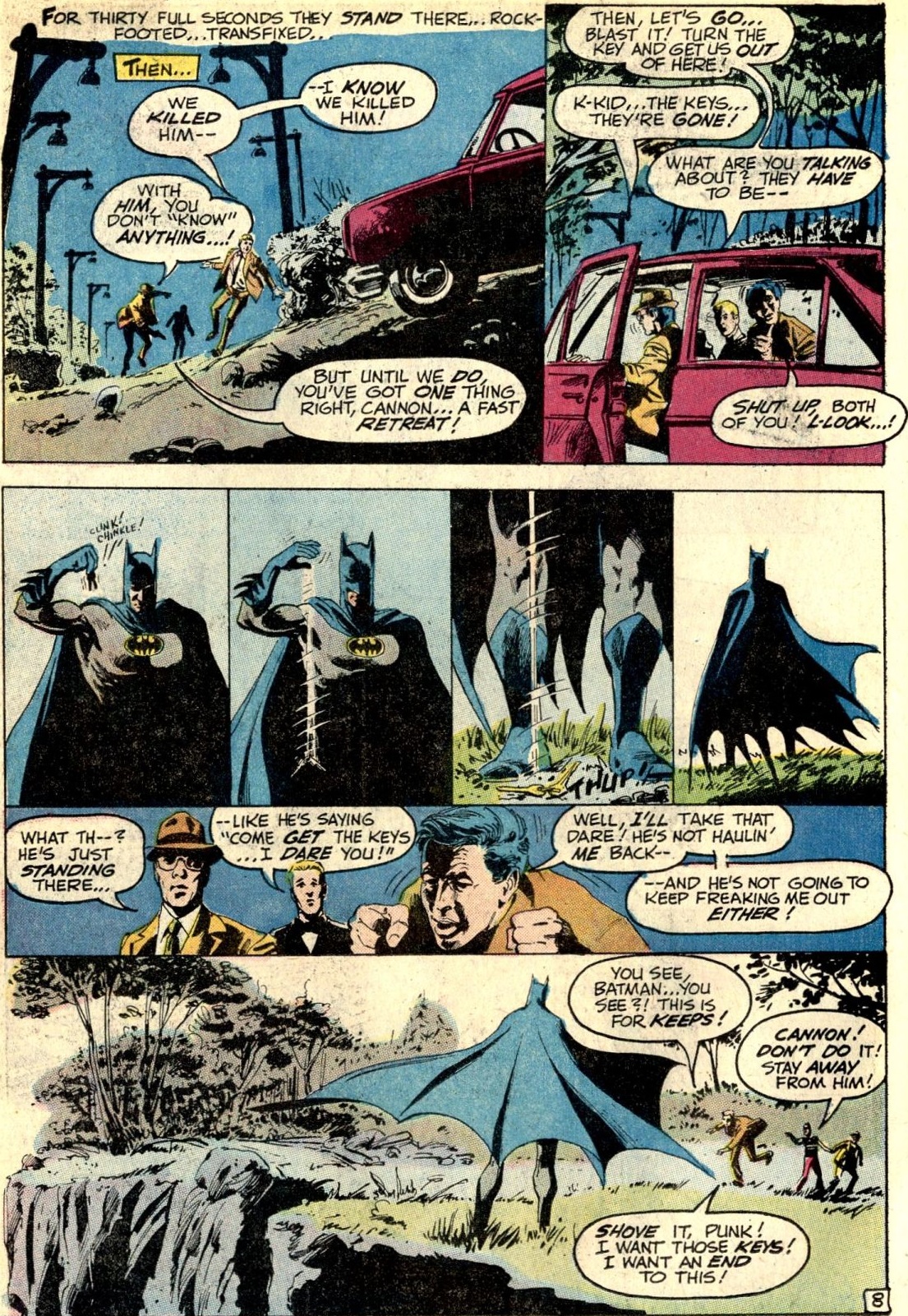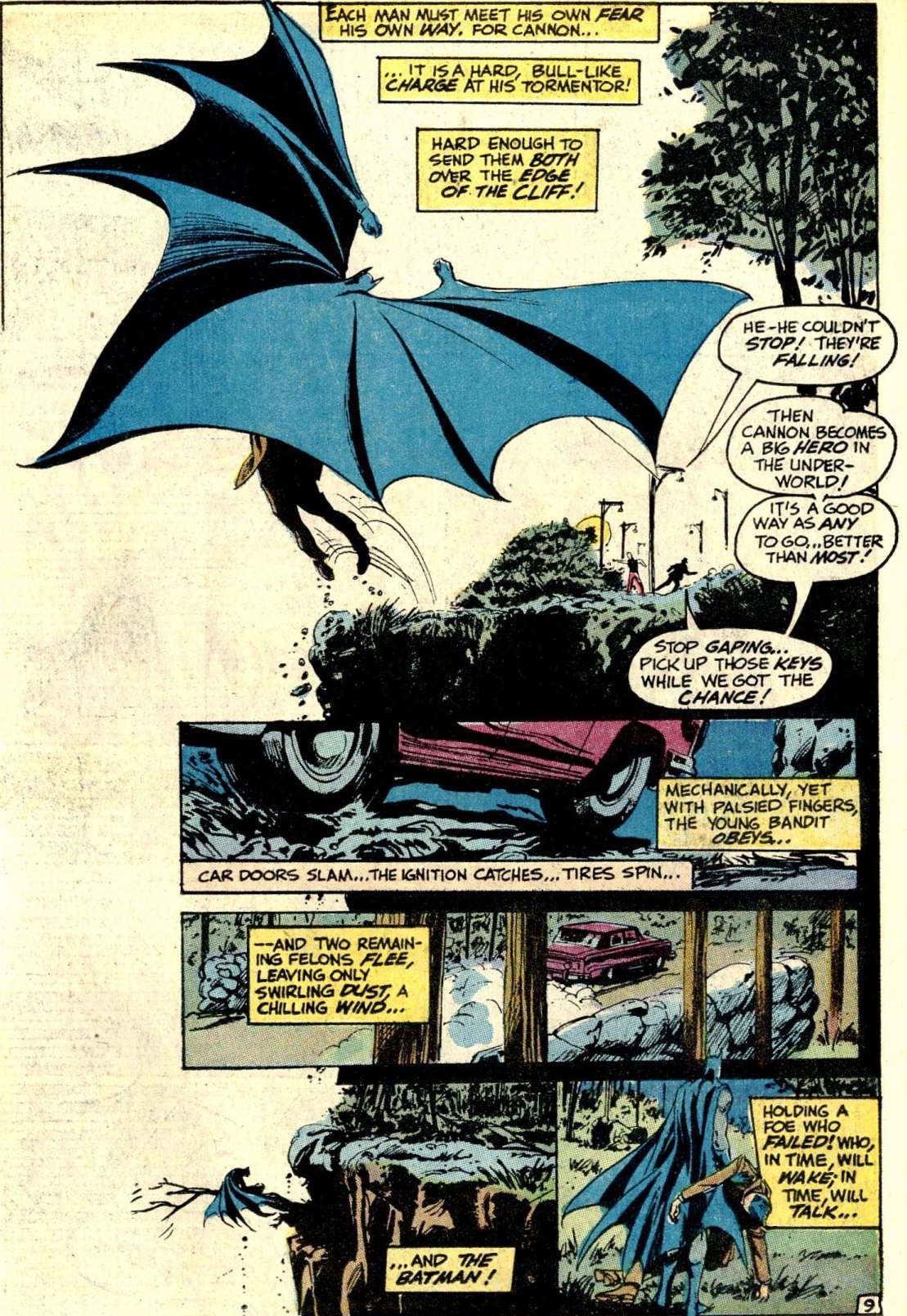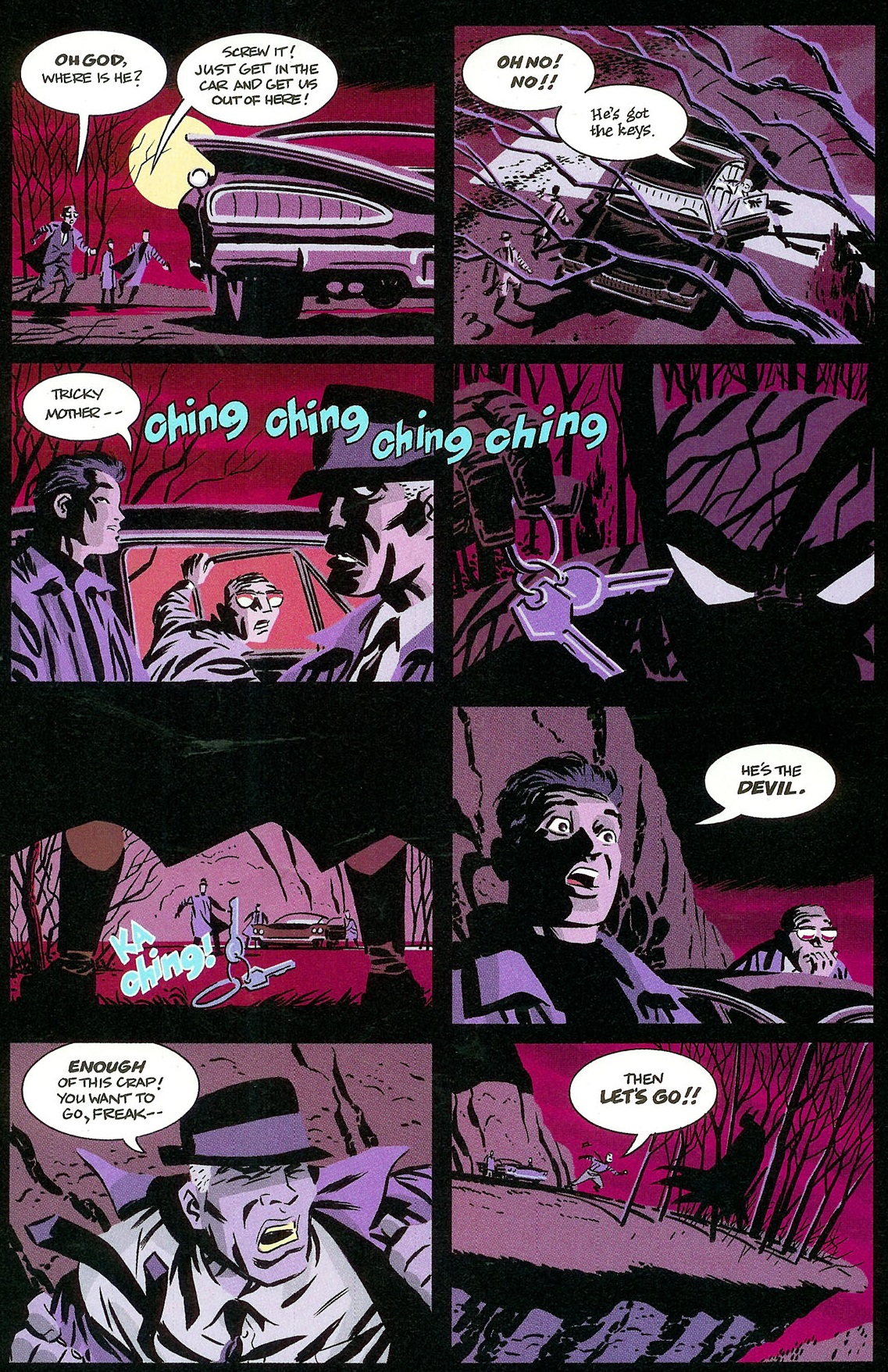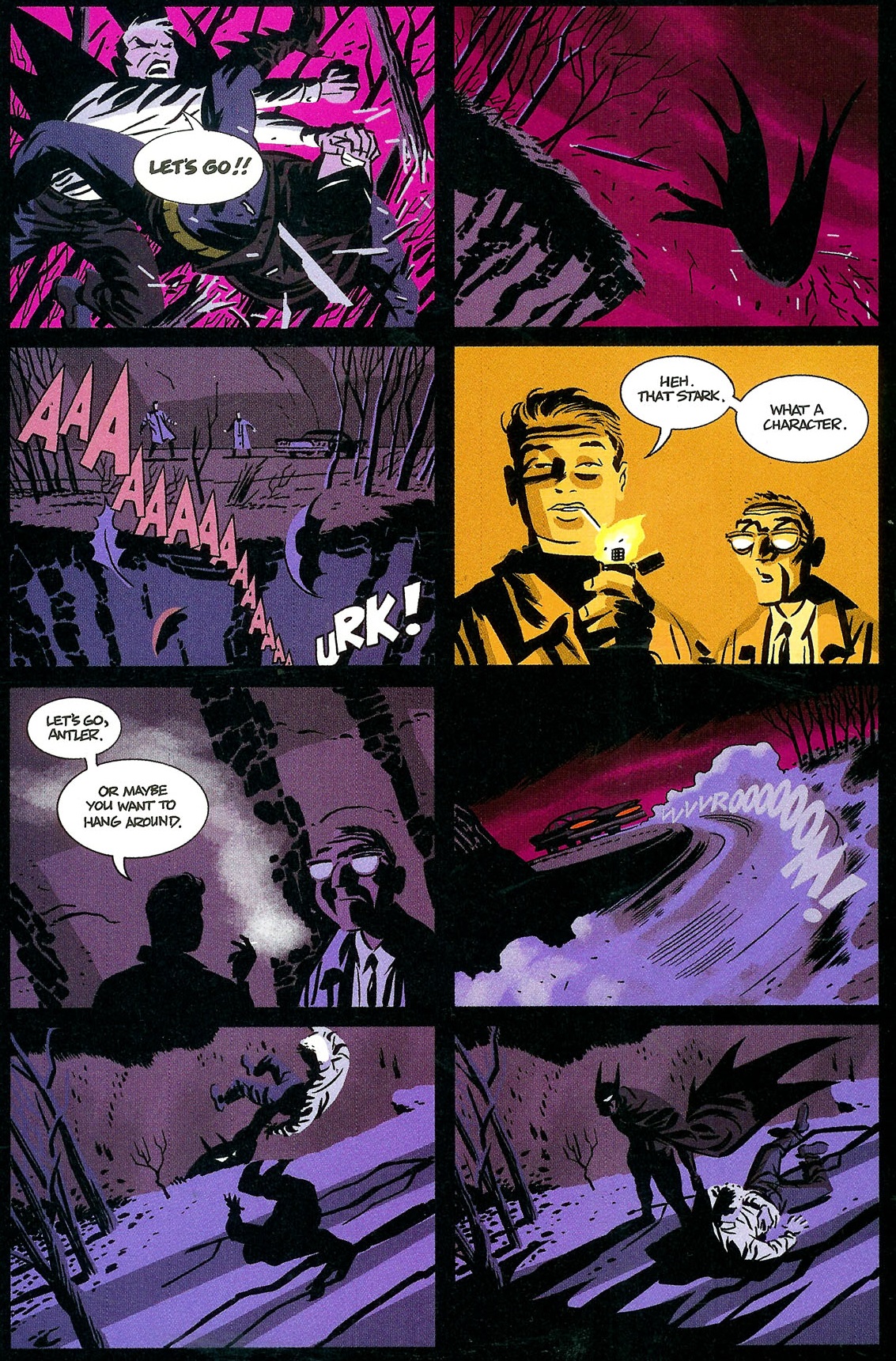A few weeks ago, I talked about remakes in comics. The thing about this medium, though, is that a lot of the time remakes are not explicit. In fact, it’s not unusual for storylines to share (and usually extend) a particular idea from an earlier arc with no-one bothering to clarify if this is meant to homage, rip-off, and/or replace the previous version.
In Batman comics, there’s the case, for example, of ‘The Dark Rider/At the Heart of Stone’ (Batman #393-394) and ‘Ten Nights of the Beast’ (Batman #417-420) – they seemed like two takes on the same story, but then ‘Troika’ (Batman #515) treated them as part of a single continuity… And what about ‘The Cult’ and ‘No Man’s Land?’ Or ‘Blind Justice’ and ‘Knigthfall?’ Or ‘Standard Operating Procedure’ and ‘Bruce Wayne: Murderer?’ Did they all happen in the same universe? If so, shouldn’t the characters be constantly struck by a sense of déjà vu?
Speaking of déjà vu, every once in a while you do get a comic that is so directly informed by a previous one that it allows you to draw direct comparisons between the approaches and styles of different creators… One example concerns ‘Night of the Stalker!’ (Detective Comics #439), first published in 1974. This classic tale opens with a gang of robbers killing a little boy’s parents during their getaway. Needless to say, this brings back some personal memories to the Dark Knight, who therefore stalks the robbers into the middle of nowhere and ruthlessly gets them one by one without uttering a single word.
‘Night of the Stalker!’ was scripted by Steve Englehart, from a plot by Vincent and Sal Amendola, who also did the pencils and background inks. According to the credits, it was based on an incident described by Neal Adams. The remaining inks were by Dick Giordano and the final editor was Archie Goodwin. Moreover, based on the Grand Comics Database, Jerry Serpe colored the story and Morris Waldinger lettered it.
The premise is simple yet very effective, with Sal Amendola deserving much credit for the way he crafted one neat scene after another… Overall, there is a rough, gritty ‘70s vibe and the comic bursts with pathos, atmosphere, and dynamic visuals! The main drawback is how text-heavy the whole thing is – while some of Steve Englehart’s prose can be moody and lyrical (‘Setting sunlight slices sharply through the dry November air, but cannot cut its chill. Rush hours throngs crowding the streets pull their coats tighter against this first touch of approaching winter…’), a lot of it is just needlessly descriptive (‘Now those leg muscles work in reverse… cushioning the impact of a death-defying leap… letting him land atop the car with no more noise than a cat!’).
Interestingly, at the time Sal Amendola’s work was apparently dished by many of his peers and the finished product was the result of several artistic clashes and compromises. Still, what we ended up with was a powerful comic that definitely stands out. It was nominated for the Best Story of the Year award at the Academy of Comic Book Arts and it has been reprinted in the collection Batman: The Greatest Stories Ever Told.
Thirty years later, Darwyn Cooke overtly remade ‘Night of the Stalker!’ in Solo #5, under the title ‘Déjà Vu’ (which had been Sal Amendola’s proposed title for the original). As far as I can tell, Cooke was in charge of practically everything – script, pencils, inks, colors, letters – so this time around we got to see a much more cohesive approach to the tale. And oh boy does it kick butt:
Leave it to Darwyn Cooke to take such a classic and churn out his own masterpiece. It’s not just that the remake looks hipper or more ‘modern’ than the original… By themselves, cleaner, splashier visuals are not enough to bring a dusty concept back to life (at the end of the day, Ben-Hur’s chariot race is still much more riveting than the pod race in The Phantom Menace), but Cooke clearly conceived each tweak to maximum effect… In an obvious move, he did away with the omniscient narration, thus fixing the original’s main flaw while letting the images drive the story. He also replaced Jerry Serpe’s naturalistic colors with much starker, expressionistic choices, creating a significantly darker mood that suited the tale (despite the title, the original didn’t seem to take place during nighttime, but this version did).
Another change that jumps at anyone reading these two back-to-back is the super-cool decision to turn one of the robbers into a homage to Parker, the career criminal whose novels Darwyn Cooke would go on to successfully adapt… In Solo, he is called Stark, after the novels’ writer Richard Stark, and he looks like the actor Lee Marvin, who played the character in the brilliant crime flick Point Blank (Cooke pulled the same trick in the Catwoman graphic novel Selina’s Big Score).
Finally, I particularly like how Cooke omitted the sequence in which Batman jumps onto the roof of the thieves’ car, so that the revelation (through his shadow) becomes a surprise for the readers as well. Sadly, Cooke also left out a climactic fight in the water near the end, which I was quite fond of, but he more than made up for it in the haunting way he nailed the rest of that scene. Indeed, this is almost as flawless a piece of noirish Batman action as you are likely find… Hell, this whole issue of Solo is freaking awesome!
So yeah, I guess what I’m trying to say is that, damn it, this year the world of comics has lost one of the best.





Interesting, your comment about the water scene. It was the very scene that Neal Adams wanted to see in a Batman story, and what made me ultimately do Déjà Vu [Night of the Stalker].
At the time, I’d wondered, sadly, why Darwyn seemed so thoroughly to have disappeared from comics, after that one story he volunteered for my New Talent Showcase. I ranked him among the handful of the best whom I was lucky to have come my way as Talent Coordinator/editor. To me, it was an honor that he chose to do his remake of my Batman story. – And I remain pleased that, in doing it, he officially gave me back my title for it.
It’s a cruel Universe that takes individuals like him from us. But he sure did make his mark.
Thank you for sharing this!
Cooke was an amazing artist who really pushed the noir/horror atmosphere with those thick blacks and strategically placed shadows. That said, I actually prefer the original’s opening page of a vibrant Gotham City, brisk with life and dynamism, from the birds above to the cars rushing below, each one no doubt full of stories… It’s just how I imagine Batman sees the city from those rooftops.